Articles > Geography
Know Ireland Largest Cities? Here are the top 25 to get you started.
Explore Ireland’s 25 largest cities, from the bustling streets of Dublin to the historic charm of Kilkenny and the scenic harbors of Galway and Waterford. Each city offers a glimpse into Ireland’s culture, history, and vibrant modern life. Discover their unique stories and fascinating facts below.
1. Dublin (Population: 1,263,219)
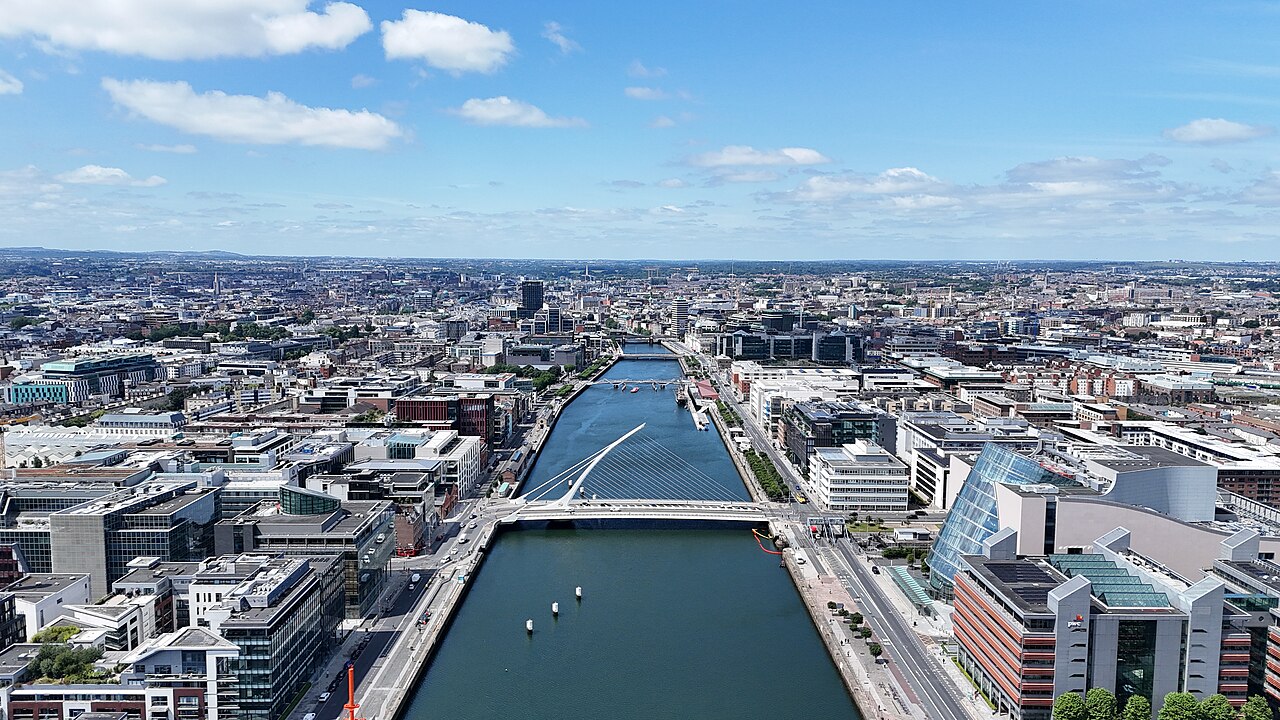
Dublin, Ireland’s capital and largest city, is the nation’s cultural and economic heart. With its rich literary history, Dublin has produced some of the world’s most famous writers, including James Joyce and Samuel Beckett. The city blends historical architecture, such as Dublin Castle and Trinity College, with modern business districts and a thriving tech industry. Its vibrant nightlife, pubs, and music scene make it a lively destination for locals and visitors alike. Dublin’s River Liffey divides the city into Northside and Southside, each with its own character. Its global influence continues to grow as a center of finance, education, and the arts.
Interesting Fact:
The famous Book of Kells is housed in Dublin’s Trinity College Library.
2. Cork (Population: 222,526)
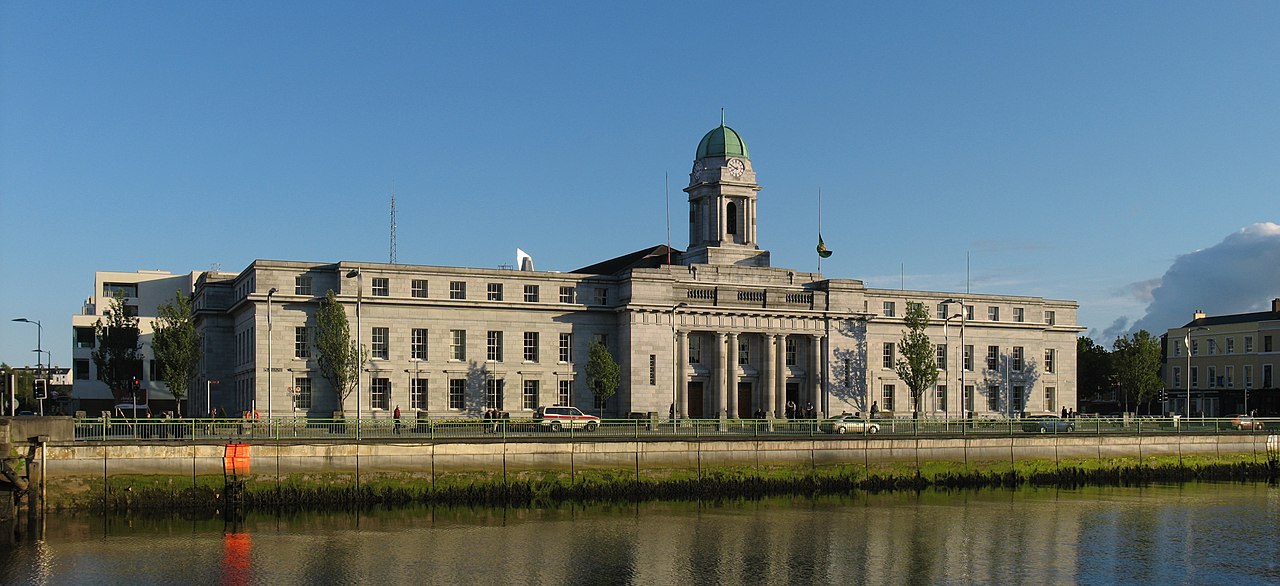
Cork, often called the “Rebel City,” is Ireland’s second largest urban center and an important cultural hub. Located on the River Lee, Cork is known for its historic buildings, lively food markets, and maritime heritage. The city boasts a strong independent identity, reflected in its local traditions and festivals. Cork’s port has historically connected Ireland to the wider world, making it a key trading hub. The surrounding county is rich in scenic landscapes, castles, and coastline. With a thriving student population and a growing tech industry, Cork combines youthful energy with deep cultural roots.
Interesting Fact:
Cork’s English Market has been a food hub since 1788.
3. Limerick (Population: 102,287)
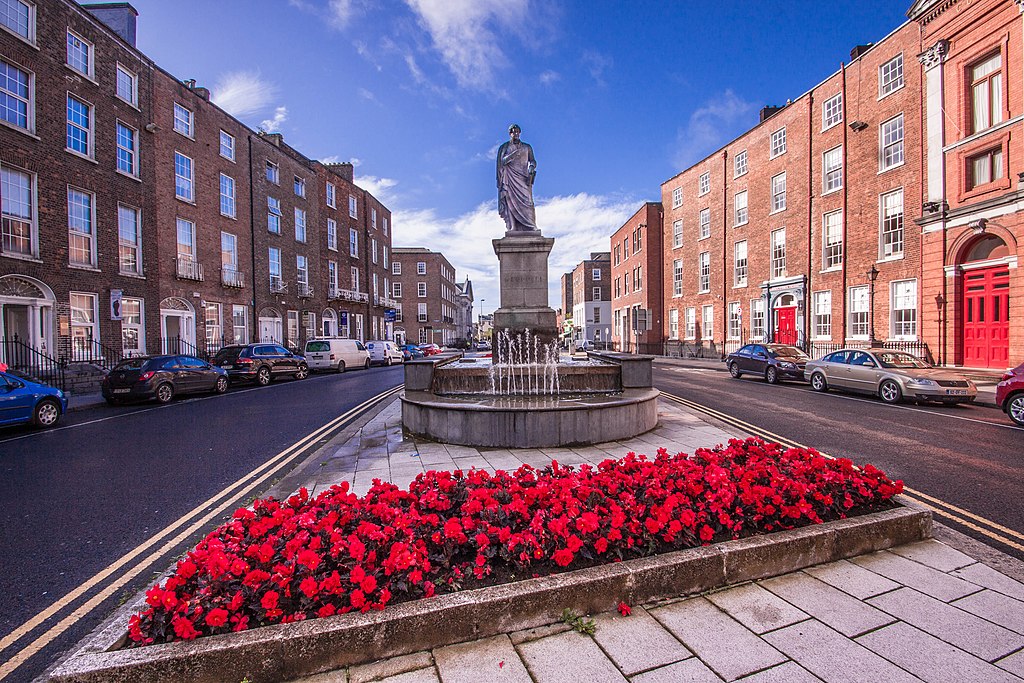
Limerick, located along the River Shannon, is a historic city with a vibrant cultural life. Its medieval heritage is visible in King John’s Castle and St. Mary’s Cathedral, while modern Limerick thrives as a center for art, education, and sport. The city is home to the University of Limerick, which contributes to a youthful and dynamic atmosphere. Limerick has a reputation for rugby excellence, with Thomond Park serving as a cathedral of the sport. Its mix of tradition and modern creativity makes it one of Ireland’s most distinctive cities.
Interesting Fact:
The Treaty of Limerick, ending the Williamite War, was signed here in 1691.
4. Galway (Population: 85,910)

Galway, on Ireland’s west coast, is celebrated for its bohemian spirit, arts festivals, and lively atmosphere. Known as the “Cultural Heart of Ireland,” Galway hosts the Galway International Arts Festival and is famous for its music, dance, and theater. The city’s Spanish Arch and medieval streets reflect its long history as a trading port. Galway Bay and the nearby Connemara region provide breathtaking scenery. The city’s energy comes alive during festivals and in its bustling pubs, where traditional Irish music thrives. Its balance of tradition and creativity has made it a favorite among visitors.
Interesting Fact:
Galway was named the European Capital of Culture in 2020.
5. Waterford (Population: 60,079)
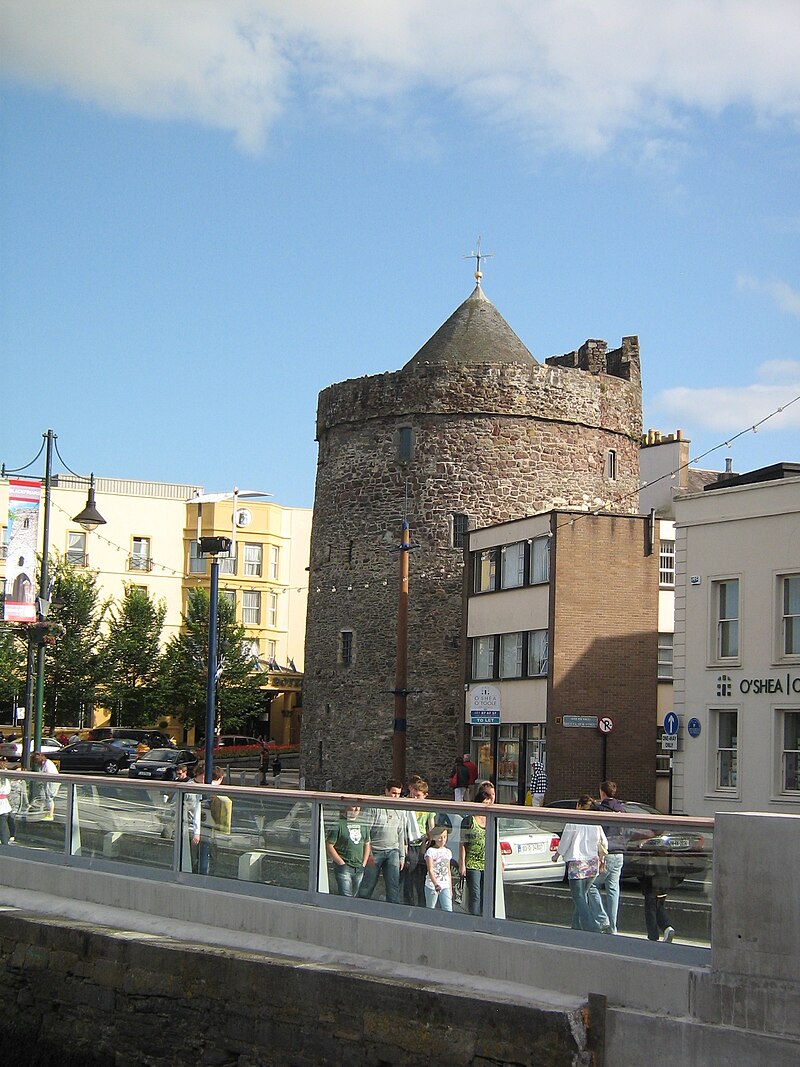
Waterford, founded by Vikings in 914, is Ireland’s oldest city. Located in the southeast, it is best known for its world-famous Waterford Crystal. The city’s Viking Triangle showcases its medieval history, with museums, narrow streets, and preserved structures. Waterford’s harbor has long played an important role in trade, making it a key seaport in Ireland’s history. Today, the city blends heritage with modern commerce, offering cultural festivals, lively shopping areas, and a growing arts scene. Its combination of history and modern energy makes it a unique destination.
Interesting Fact:
Waterford Crystal is internationally renowned for luxury glassmaking.
6. Drogheda (Population: 44,135)
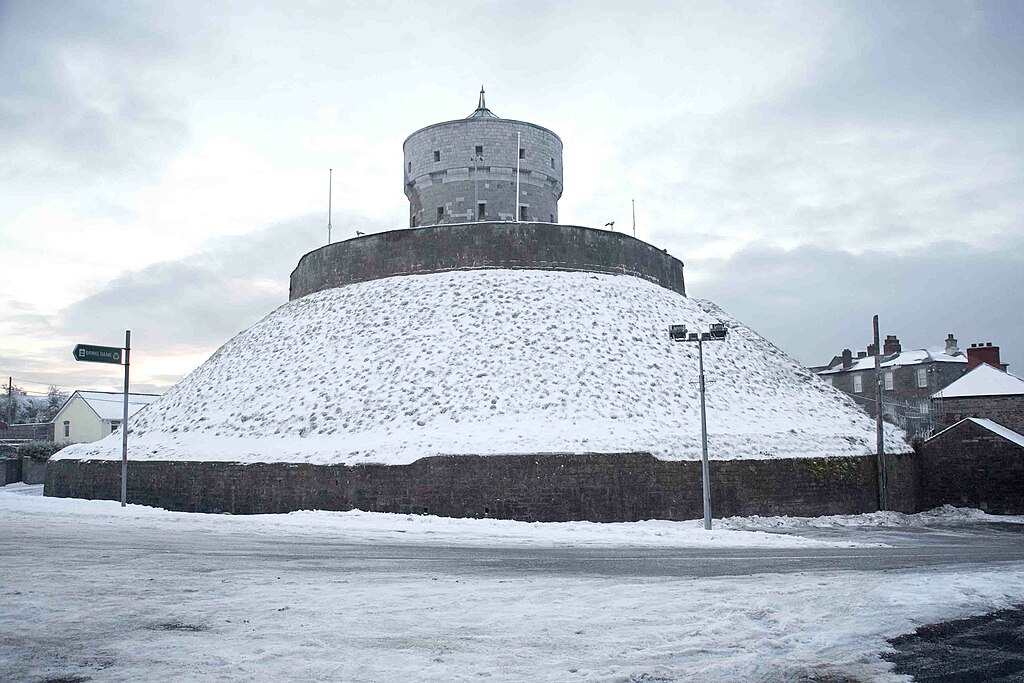
Drogheda, located on the River Boyne north of Dublin, is one of Ireland’s oldest towns. It has significant medieval landmarks, including St. Laurence’s Gate and Millmount Fort. The nearby Boyne Valley is rich in history, home to the ancient site of Newgrange. Drogheda has developed into a modern commuter town for Dublin, while maintaining its distinct identity and historical character. Its vibrant arts and music scenes contribute to the cultural fabric of Ireland. Drogheda continues to balance its historic legacy with contemporary growth.
Interesting Fact:
Drogheda is close to Newgrange, a UNESCO World Heritage Site older than Stonehenge.
7. Dundalk (Population: 43,112)
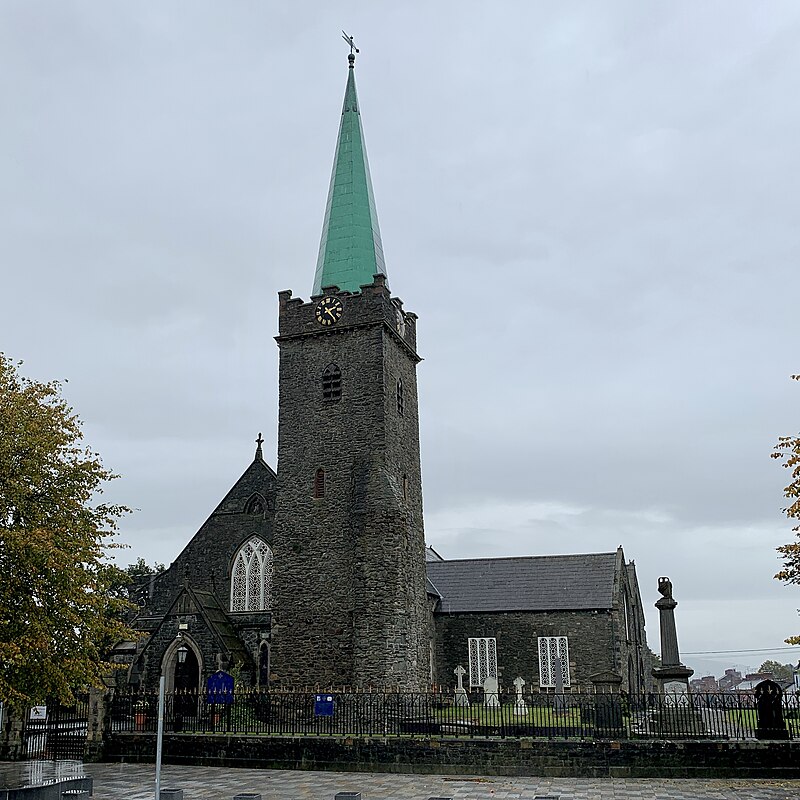
Dundalk, situated near the border with Northern Ireland, is a strategic and historic town. It has Celtic origins and has long been a center for trade and industry. Dundalk Bay and the nearby Cooley Mountains provide stunning natural surroundings. The town has invested in cultural development, with theaters, music venues, and sports facilities. Dundalk’s strong sense of community is reflected in its local festivals and events. It also plays a role in cross-border commerce and cultural exchange.
Interesting Fact:
Dundalk is home to Ireland’s second-largest stadium, Oriel Park, famous for football.
8. Swords (Population: 40,776)
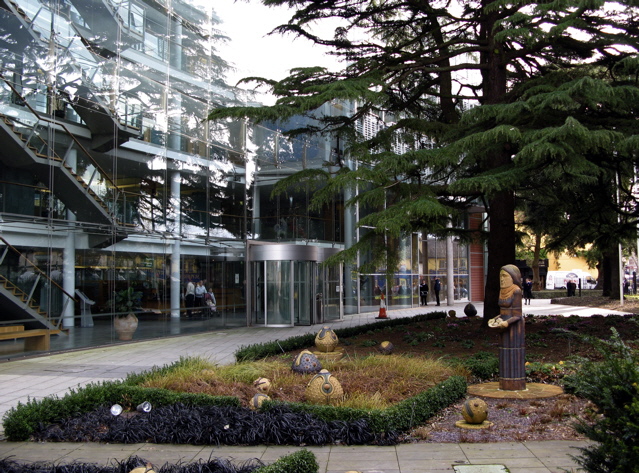
Swords, located just north of Dublin, is one of Ireland’s fastest-growing towns. Its proximity to Dublin Airport has made it an attractive location for businesses and commuters. The town features Swords Castle, a medieval landmark that highlights its long history. Despite modern expansion, Swords retains a community feel, with parks, shopping centers, and schools contributing to quality of life. Its mix of heritage and modern suburban life reflects Ireland’s rapid urban development in recent decades.
Interesting Fact:
Swords Castle once served as the residence of the Archbishops of Dublin.
9. Navan (Population: 33,886)
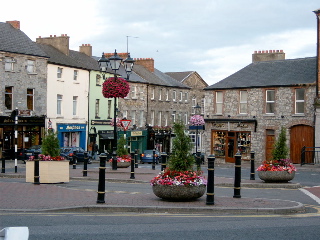
Navan, located in County Meath, is a growing commuter town with deep historical roots. It lies near the Hill of Tara, the ancient seat of Irish High Kings. The town itself has grown significantly due to its location within the Greater Dublin Area. Modern Navan features a blend of residential areas, commercial centers, and cultural amenities. Its history, combined with its role as a modern commuter hub, gives Navan a unique position in Ireland’s urban landscape.
Interesting Fact:
Navan is located near the Hill of Tara, one of Ireland’s most important archaeological sites.
10. Bray (Population: 33,512)
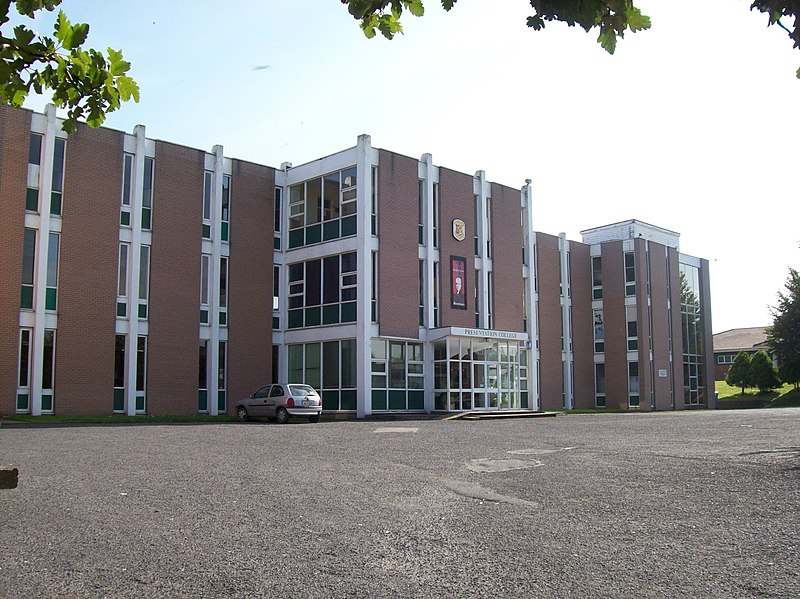
Bray, situated on Ireland’s east coast, is a seaside town with a rich history as a holiday resort. Its long promenade, pebble beaches, and nearby Bray Head make it a favorite for visitors. The town has developed into a vibrant community with cultural events, restaurants, and festivals. Bray’s proximity to Dublin allows easy access to the capital while maintaining a coastal lifestyle. With its combination of leisure, history, and modern growth, Bray is one of Ireland’s most appealing coastal towns.
Interesting Fact:
Bray has one of Ireland’s longest seafront promenades.
11. Ennis (Population: 27,923)
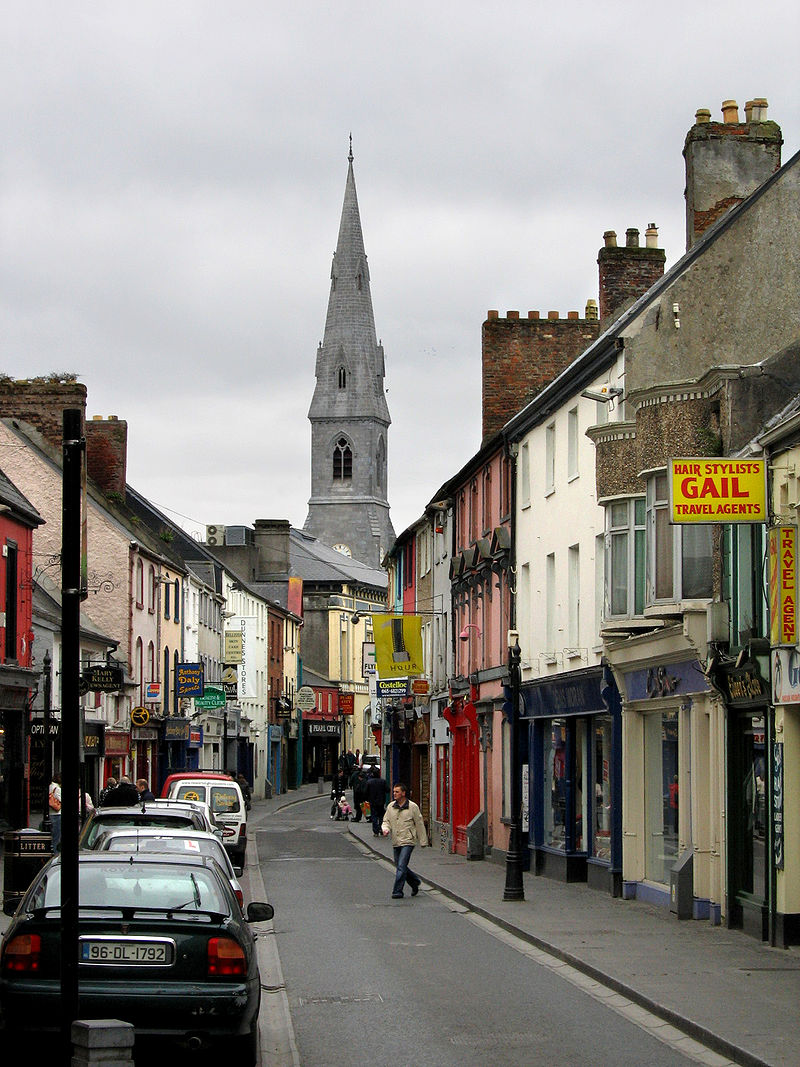
Ennis, located in County Clare, is often called Ireland’s “Traditional Music Capital.” The town has a vibrant cultural scene, hosting music festivals and nightly sessions in its many pubs. Ennis combines medieval charm with modern growth, featuring narrow streets, historic churches, and contemporary shopping areas. It plays a central role in the west of Ireland’s cultural life and has become a popular destination for those seeking authentic Irish traditions. Its location also makes it a gateway to the Cliffs of Moher and the Burren.
Interesting Fact:
Ennis hosts one of Ireland’s biggest annual traditional music festivals, Fleadh Nua.
12. Carlow (Population: 27,351)
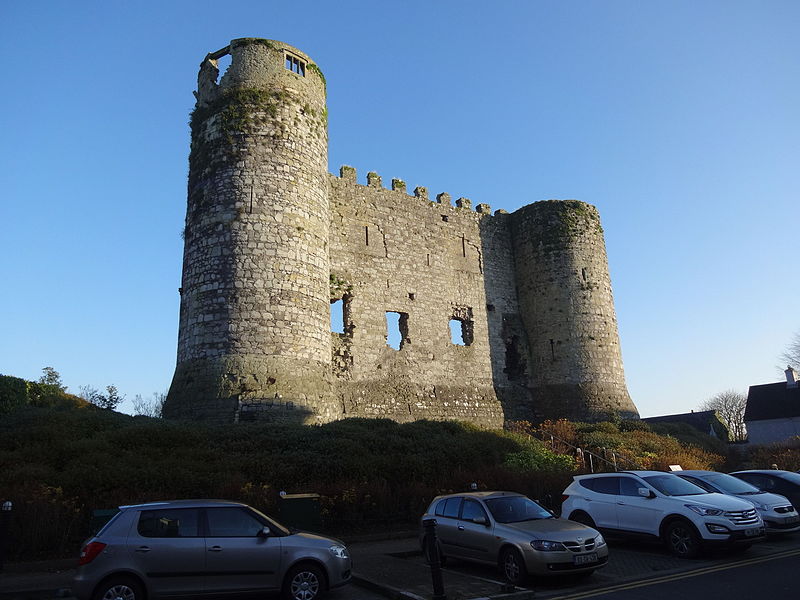
Carlow, situated along the River Barrow, is known for its rich history and lively student population. The town blends medieval landmarks, such as Carlow Castle, with a thriving arts and cultural scene. As the home of South East Technological University, Carlow has a young and energetic atmosphere. Surrounded by picturesque countryside, it also serves as a hub for exploring Ireland’s natural beauty. Carlow’s festivals, theaters, and markets contribute to its lively character.
Interesting Fact:
Carlow Castle, dating back to the 13th century, is one of the oldest stone castles in Ireland.
13. Kilkenny (Population: 27,184)

Kilkenny, often called the “Marble City,” is renowned for its medieval architecture and lively cultural scene. Its centerpiece is Kilkenny Castle, surrounded by beautiful gardens. The city is famous for its arts and crafts, with the Kilkenny Arts Festival drawing international attention. Narrow lanes, historic pubs, and Gothic buildings give Kilkenny a unique charm. It is also a center for Irish brewing heritage, with Smithwick’s brewery originating here. The mix of history, art, and modern vibrancy makes Kilkenny one of Ireland’s cultural jewels.
Interesting Fact:
Kilkenny was once the capital of Ireland during the Confederation period (1642–1649).
14. Naas (Population: 26,180)
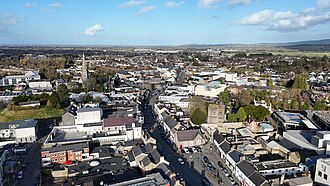
Naas, located in County Kildare, has grown from a historic market town into a modern commuter hub for Dublin. The town is known for its equestrian heritage, with racecourses like Punchestown and Naas Racecourse nearby. Naas features a mix of historic buildings, churches, and modern shopping centers. Its location makes it a strategic town within the Greater Dublin Area, and it continues to grow as both a residential and commercial hub.
Interesting Fact:
Naas is closely associated with horse racing and hosts major annual events at Punchestown.
15. Tralee (Population: 26,079)
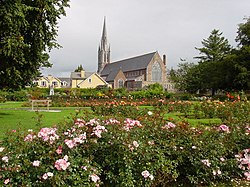
Tralee, the county town of Kerry, is best known for the Rose of Tralee International Festival, one of Ireland’s most famous events. The town sits at the base of the Dingle Peninsula, surrounded by natural beauty. Tralee has a strong cultural presence, with theaters, museums, and parks contributing to its appeal. Its history, combined with its modern role as a tourism hub, makes it a lively and welcoming destination.
Interesting Fact:
Tralee hosts the Rose of Tralee Festival every August, attracting international visitors.
16. Newbridge (Population: 24,366)

Newbridge, in County Kildare, is a thriving commuter town with strong ties to Ireland’s equestrian industry. It is home to Newbridge Silverware, famous for its craftsmanship. The town has modern shopping centers, schools, and cultural facilities. With its growing population and proximity to Dublin, Newbridge has become one of Ireland’s fastest-developing towns.
Interesting Fact:
Newbridge Silverware is internationally recognized for fine cutlery and jewelry.
17. Balbriggan (Population: 24,322)

Balbriggan, a coastal town in Fingal, has grown rapidly as part of the Dublin metropolitan area. Once known for its cotton and hosiery industries, Balbriggan is now a vibrant community with diverse cultural influences. Its seaside location, sandy beaches, and historic Martello towers make it a scenic place to live. Balbriggan’s expansion reflects Ireland’s modern urban development.
Interesting Fact:
Balbriggan’s hosiery was once supplied to the British royal family.
18. Portlaoise (Population: 23,494)
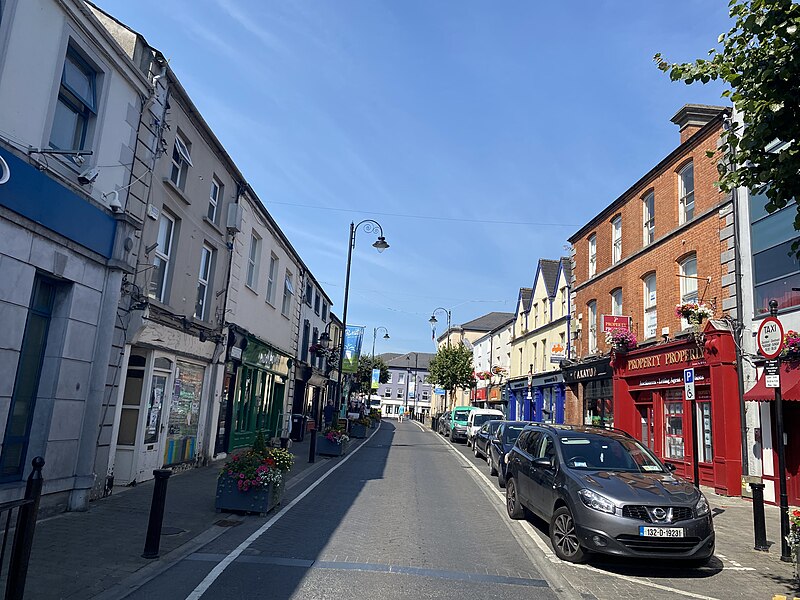
Portlaoise, the county town of Laois, has transformed from a historic settlement into a growing commuter hub. It is strategically located along key transport routes, making it a center for trade and development. The town has modern amenities, schools, and cultural spaces. Surrounded by the Slieve Bloom Mountains, Portlaoise combines accessibility with scenic beauty.
Interesting Fact:
Portlaoise Prison, one of Ireland’s high-security facilities, is located here.
19. Athlone (Population: 22,869)
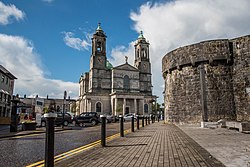
Athlone, located on the River Shannon, is a historic town with a strategic position at the heart of Ireland. Its centerpiece is Athlone Castle, overlooking the river. The town is known for its vibrant pubs, restaurants, and cultural life. Athlone serves as a major transport and commercial hub, connecting the east and west of Ireland. Its mix of heritage and modern energy makes it an appealing destination.
Interesting Fact:
Athlone is home to Sean’s Bar, recognized as one of the oldest pubs in Europe.
20. Mullingar (Population: 22,667)
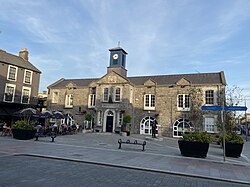
Mullingar, in County Westmeath, is known for its musical heritage and picturesque lakes nearby. The town features historic churches, lively markets, and cultural venues. Mullingar has a reputation for producing musicians, including members of the world-famous band One Direction. The surrounding region offers fishing, boating, and outdoor recreation, making Mullingar both a cultural and natural hub.
Interesting Fact:
Mullingar is the hometown of Niall Horan from One Direction.
21. Letterkenny (Population: 22,549)
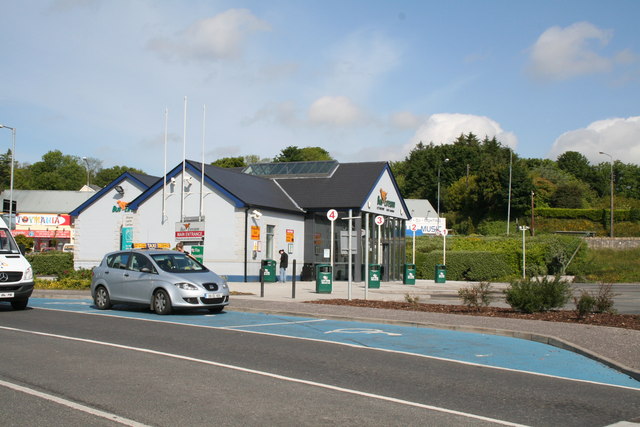
Letterkenny, the largest town in County Donegal, is a gateway to the scenic northwestern coast. It has grown rapidly in recent decades, with modern shopping centers, schools, and cultural venues. Letterkenny serves as a hub for business, healthcare, and education in the region. Its location near Glenveagh National Park and the Wild Atlantic Way makes it an attractive destination for tourists.
Interesting Fact:
Letterkenny has Ireland’s tallest stainless-steel spire, the Polestar.
22. Greystones–Delgany (Population: 22,009)
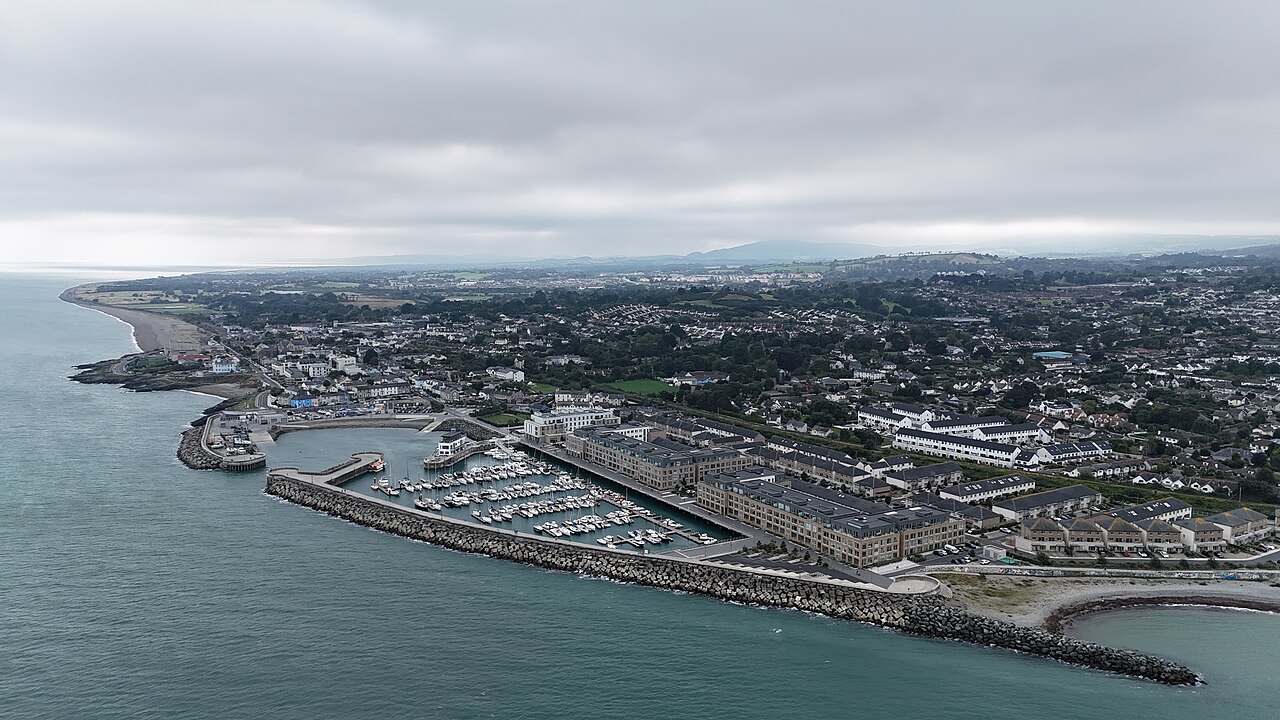
Greystones–Delgany, located in County Wicklow, is a picturesque coastal community. Known for its beaches, marina, and scenic walks, Greystones offers a high quality of life. The area has grown significantly as a commuter town for Dublin, while maintaining its village charm. With strong community life and stunning natural surroundings, it is considered one of Ireland’s most desirable places to live.
Interesting Fact:
Greystones was named the “most liveable community in the world” by the LivCom Awards in 2008.
23. Wexford (Population: 21,524)
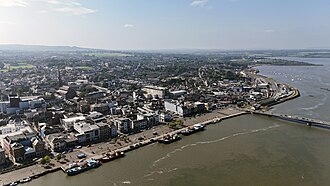
Wexford, located in the southeast, is famous for its opera festival and maritime history. The town has Viking origins and was once a key Norman stronghold. Wexford’s narrow streets, historic churches, and cultural festivals create a lively atmosphere. Its harbor and proximity to beaches add to its appeal as a tourist destination.
Interesting Fact:
Wexford hosts the world-famous Wexford Festival Opera every autumn.
24. Sligo (Population: 20,608)
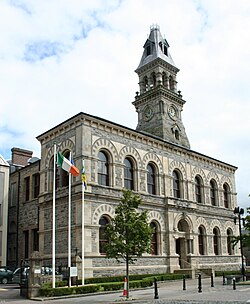
Sligo, in the northwest, is renowned for its natural beauty and literary heritage. Surrounded by Benbulben Mountain and coastal landscapes, Sligo has inspired poets such as W.B. Yeats. The town features historic ruins, modern shopping areas, and cultural venues. Its music and arts scene continues to thrive. Sligo is also a gateway to Ireland’s surf coast, attracting outdoor enthusiasts.
Interesting Fact:
Sligo is the final resting place of Nobel Prize-winning poet W.B. Yeats.
25. Celbridge (Population: 20,601)
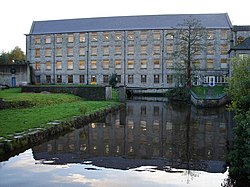
Celbridge, located in County Kildare, is a historic town with strong ties to the 18th century. It is associated with Castletown House, Ireland’s largest Palladian-style mansion. Celbridge has grown rapidly as a commuter town while retaining its historic character. With parks, schools, and strong community life, it offers a balance between heritage and modern living.
Interesting Fact:
Celbridge’s Castletown House is one of the finest examples of Palladian architecture in Ireland.




